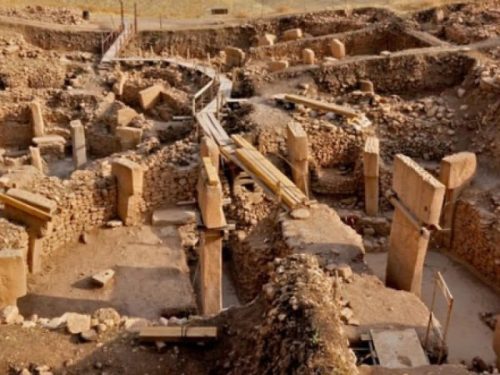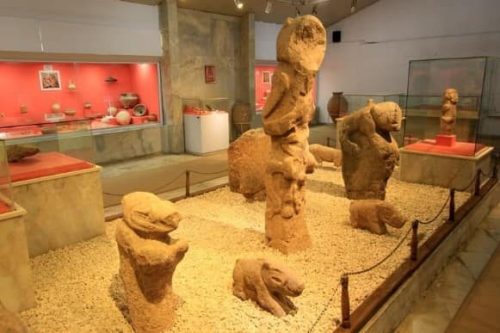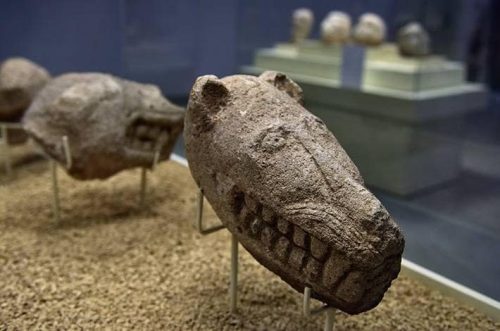
Göbeklitepe, a remarkable archaeological site located 18 kilometers northeast of Şanlıurfa city center in Turkey, has captivated the world with its awe-inspiring historical significance. Dated to around 9600-9500 BC, this site stands as the oldest known historical structure, predating even the Egyptian Pyramids and Stonehenge.
Its discovery in 1963 during a joint survey by the Universities of Istanbul and Chicago marked the beginning of a journey to unravel its secrets. After extensive excavations initiated in 1994, Göbeklitepe was revealed as a Neolithic cult center, shrouded in mystery for over 12,000 years. This article explores the fascinating history, architecture, and significance of Göbeklitepe in the annals of human civilization.
A Monument of Unprecedented Antiquity
At the heart of Göbeklitepe’s historical significance lies its extraordinary age. Dated back to the Neolithic era, approximately 12,000 years ago, Göbeklitepe predates other iconic historical structures by millennia. Its construction defies conventional expectations of the era, as it was created during a time when humanity primarily lived as hunter-gatherers, far removed from the concepts of settled communities and agriculture.

The construction of Göbeklitepe’s temples, marked by advanced architecture and monumental T-shaped limestone columns, astounded researchers worldwide. These remarkable structures are surrounded by around 20 round and oval formations, each with a diameter of 30 meters, further emphasizing the site’s architectural grandeur.
The Architectural Marvel of Göbeklitepe
Göbeklitepe’s most striking feature is its T-shaped limestone columns, each towering at an impressive height of 5 meters.
These columns, standing independently within the temple structures, are adorned with intricate engravings, representing animist figures and beliefs that offer a unique glimpse into the spiritual world of prehistoric peoples. Smaller columns line the inner walls of the buildings, further enhancing the site’s mystical aura.
The Dimensions of Significance
Göbeklitepe’s significance transcends its antiquity and architectural grandeur. It is not merely a historical site; it is a sanctuary of unparalleled importance for the Neolithic period. Its dimensions, dating, and monumentality of structures challenge existing theories and dating frameworks in archaeological studies.

The site’s preservation in its natural environment for over 12,000 years has yielded invaluable archaeological finds that shed light on prehistoric life, beliefs, and practices.
The Historical and Cultural Significance
Göbeklitepe’s profound cultural and historical importance is immeasurable. It stands as a testament to human creativity and innovation during a time when survival and subsistence were paramount concerns.
The construction of temples of this magnitude in an era marked by nomadic lifestyles and rudimentary technologies is a testament to the organization and imagination of the people who once inhabited this region. The animist figures and symbols engraved on the columns provide vital insights into the spiritual and religious beliefs of prehistoric societies.
A Turning Point in Archaeological Discoveries
Göbeklitepe is hailed as the “biggest archaeological discovery” of recent years, revolutionizing our understanding of early human history. The site challenges traditional notions of the Neolithic period and forces us to reevaluate our understanding of the capabilities and aspirations of our ancient ancestors.

Its existence redefines the timeline of human architectural achievements and marks a significant milestone in the journey of archaeological exploration.
Conclusion
Göbeklitepe, Turkey’s ancient treasure, stands as an irreplaceable testament to human ingenuity and the pursuit of spiritual expression during a time of immense challenges. Dating back 12,000 years, this Neolithic cult center defies conventional wisdom, revealing an astonishing level of architectural sophistication and religious fervor.
As researchers continue to uncover its secrets, Göbeklitepe remains an enigmatic and invaluable piece of our shared human history, forever changing the way we perceive the past. It is a timeless monument that reminds us of the boundless potential of the human spirit, even in the most ancient of times.






